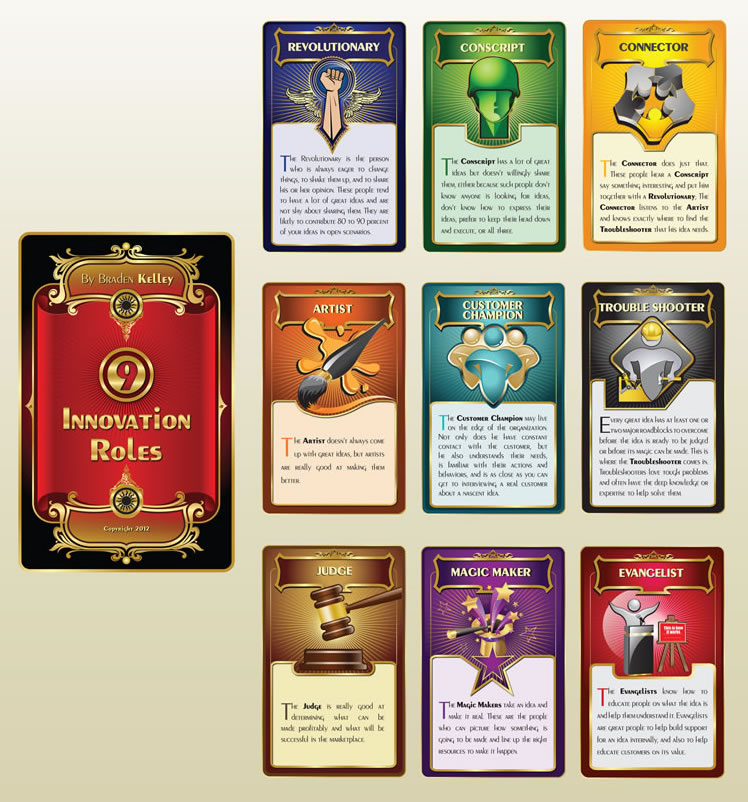 ‘What are three specific actions that a non-innovative company can take to become more innovative?’
‘What are three specific actions that a non-innovative company can take to become more innovative?’
Sometimes I think that people out there talking about innovation try and make crafting a good innovation process sound harder than it is and the work of making innovation happen sound easier than it really is. Whether this is self-serving behavior to try and drive people to buy their books or consulting services, I’m not sure, but let’s give them the benefit of the doubt and assume it’s not.
Instead let’s see if we can simplify some of what we know into three specific actions that a non-innovative company can take to become more innovative:
1. Make a Commitment
- Many organizations say they want to be more innovative, but few are willing to make the commitment. Leaders may talk about it once or twice, and then expect others in the organization to commit themselves to innovation. Talking about innovation is much easier than committing to the changes and risks required for successful innovation. Organizations that succeed at becoming more innovative commit the financial resources to discrete innovation projects, they commit to the human resources flexibility necessary to staff them, and they commit the communications resources necessary to ensure that everyone knows the innovation journey the organization is committed to.
2. Collect and Connect:
- Innovation is ultimately all about data. Organizations seeking to improve their ability to innovate, must get better at collecting and connecting the dots. This means improving their ability to transform data about the organization’s customers into information, information into knowledge, and knowledge into insight. The ability to transform data all the way through to insight is key because new and novel insights drive an organization’s ability to identify those ideas with the potential to deliver more value to their target market than any other existing alternative. Improving this transformation capability is not just about data though, but about people, and if your organization really wants to become more innovative it has get better at connecting people at the same time (both online and in the real world). Creating connections between people and data is a powerful input to innovation.
3. Failure to Plan is Planning to Fail:
- Most organizations do a great job of planning how to succeed, but many organizations don’t make a plan for how to fail. People like to talk about failing fast, failing cheap, and failing smart. The first two are self-explanatory, but what does that failing smart look like?
- In part this means taking educated risks, but even doing that you are still going to have failures, and so you must ask yourself:
- What did we learn?
- What can we use later?
- What do we do now?
Doing these three things won’t guarantee that you will come up with a whole collection of new innovations, but it will help make your organization more innovative. There is a difference, and if you’re not clear on what it is, then let me direct your attention back to the first paragraph. 😉
![]() Sign up here to get Human-Centered Change & Innovation Weekly delivered to your inbox every week.
Sign up here to get Human-Centered Change & Innovation Weekly delivered to your inbox every week.

 I had the opportunity to attend the
I had the opportunity to attend the 
 Social media serves an incredibly important role in innovation. Social media functions as the glue to stick together incomplete knowledge, incomplete ideas, incomplete teams, and incomplete skillsets. Social media is not some mysterious magic box. Ultimately it is a tool that serves to connect people and information.
Social media serves an incredibly important role in innovation. Social media functions as the glue to stick together incomplete knowledge, incomplete ideas, incomplete teams, and incomplete skillsets. Social media is not some mysterious magic box. Ultimately it is a tool that serves to connect people and information. How should firms develop the organizational structure, culture, and incentives (e.g., for teams) to encourage successful innovation?
How should firms develop the organizational structure, culture, and incentives (e.g., for teams) to encourage successful innovation?